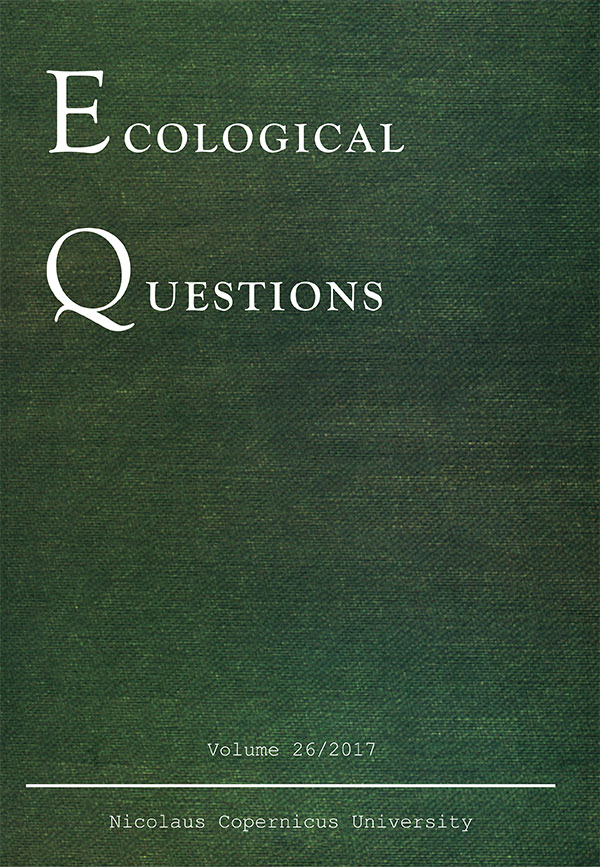Spruce and broadleaved trees pollen percentages and PAR values in the European part of Russia: 9 years of pollen trap monitoring implemented to the fossil data
DOI:
https://doi.org/10.12775/EQ.2017.009Keywords
modern pollen deposition, pollen monitoring, Tauber traps, Holocene, Picea, broadleaved treesAbstract
Abstract. 9-years results of modern pollen monitoring in the Central European Russia are presented. We discuss some implementations of modern pollen data to the interpretation of fossil distribution for Picea and broadleaved trees pollen.
References
Hicks S., Ammann B., Latałowa M. & Pardoe H., 1996, European pollen monitoring programme, Project description and guidelines, Oulu University Press, Oulu, Finland.
Lisitsyna O. V., Giesecke T., & Hicks S., 2011, Exploring pollen percentage threshold values as an indication for the regional presence of major European trees, Review of Palaeobotany and Palynology 166(3): 311–324.
Nosova M.B., Severova E.E. & Volkova O.A., 2017, A 6500-year pollen record from the Polistovo-Lovatskaya Mire System (North-West European Russia), Vegetation dynamics and signs of human impact, Grana – in press.
Novenko E.Y., Volkova E.M., Nosova N.B. & Zuganova I.S., 2009, Late Glacial and Holocene landscape dynamics in the southern taiga zone of East European Plain according to pollen and macrofossil records from the Central Forest State Reserve (Valdai Hills, Russia), Quaternary International 207: 93–103.
Downloads
Published
How to Cite
Issue
Section
Stats
Number of views and downloads: 552
Number of citations: 0



